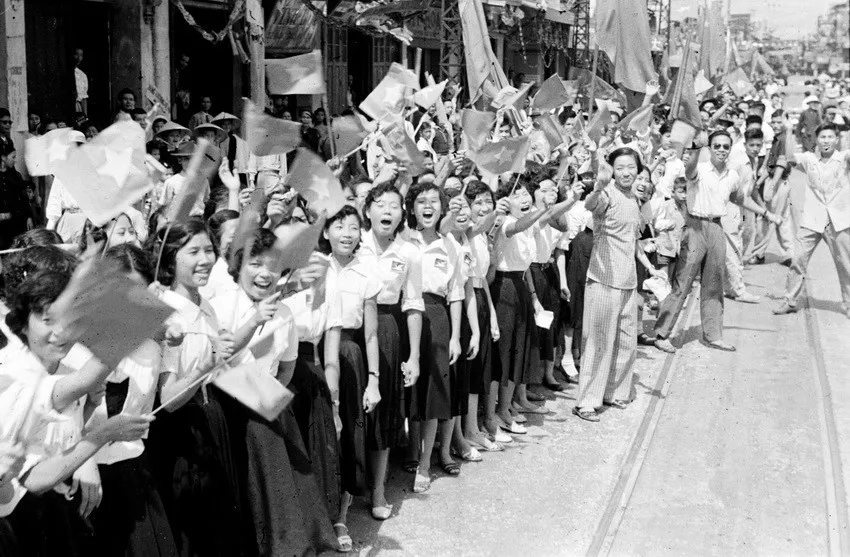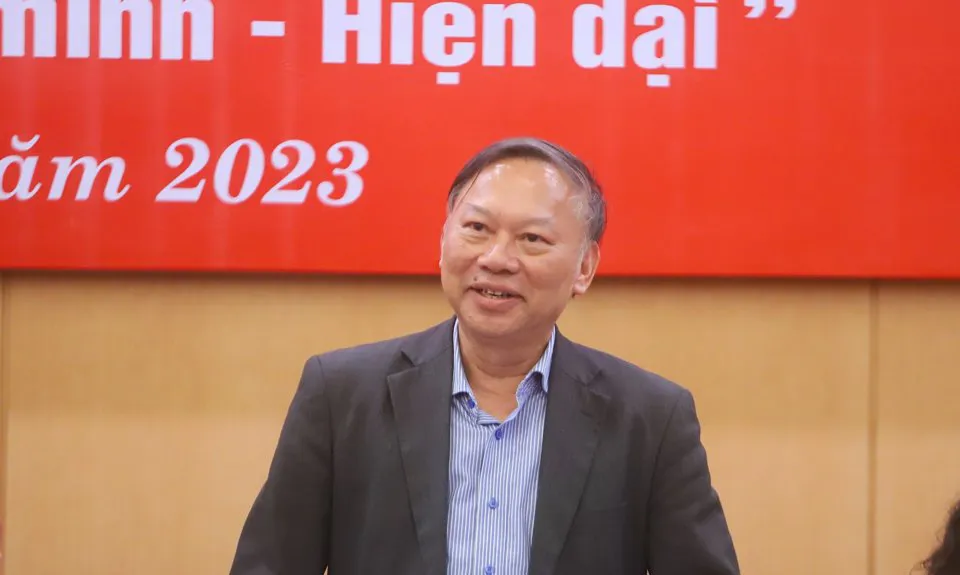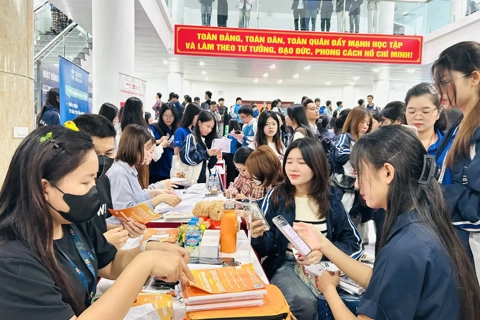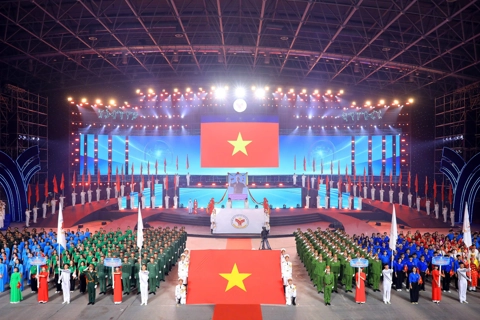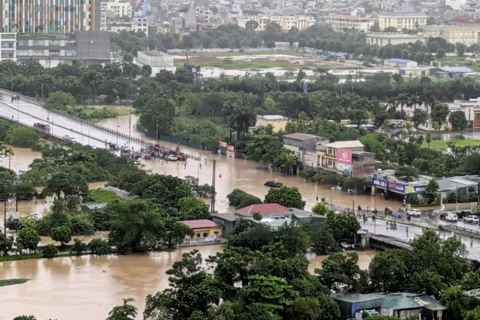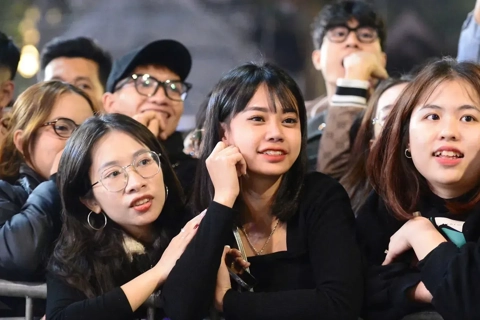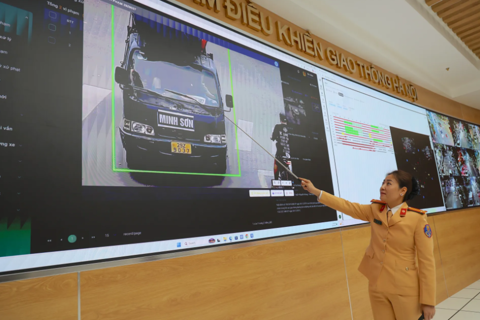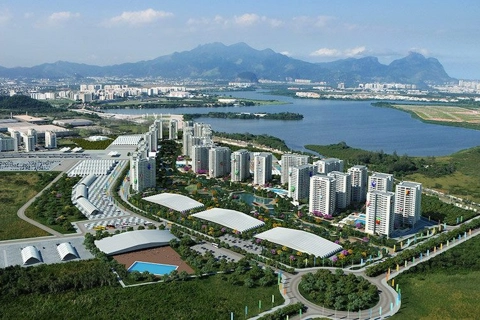Hanoi: rising from war ashes to become City for Peace
Hanoi's cultural heritage is a huge resource for Hanoi to develop comprehensively and sustainably, but it also presents a major challenge for those charged with managing the capital.
People's Teacher Nguyen Quang Ngoc is currently the Vice President of the Vietnam Historical Science Association and the former Director of the Center for Hanoi Studies and Capital Development. He has conducted studies on Hanoi and successfully established the field of Hanoi Studies, which has contributed to the development strategies of the capital. He was also a member of the team that prepared the dossier for the nomination of the Thang Long Imperial Citadel as a World Heritage Site. In 2020, Professor Ngoc was awarded the title of Distinguished Citizen of the Capital.
On the occasion of the 70th anniversary of the liberation of the capital, Professor Nguyen Quang Ngoc spoke to The Hanoi Times about Hanoi's transformation from a war-torn city to a City for Peace.
| The people of Hanoi greet the soldiers who took over the capital on October 10, 1954. File Photo |
Historical march
Liberation Day, October 10, 1954, is a milestone in the heroic history of the capital when the revolutionary army took over Hanoi from the French colonialists. Could you give us the historical context of this important event?
On May 7, 1954, the battle of Dien Bien Phu ended victoriously for the Vietnamese and the war of resistance against the French. We returned to the Geneva talks as victors and signed the Accords on July 21, 1954.
Accordingly, France and the relevant parties pledged to respect the independence, sovereignty, and territorial integrity of Vietnam, Laos, and Cambodia. Based on the balance of power, the parties adopted the 17th parallel as the temporary dividing line between North and South Vietnam. French forces had to move south, awaiting repatriation. The North, from the 17th parallel to the northern border, including the capital Hanoi, was completely liberated.
On the Vietnamese side, the Party and government prepared to take over the entire northern region. Meanwhile, the French army pulled out of Hanoi one by one. From September 1954 to October 9, 1954, the last French soldiers left Hanoi through the Long Bien Bridge, ending their occupation of the capital.
President Ho Chi Minh asked the takeover troops to maintain social order and security, protect the lives and property of the people, combat all acts of sabotage by the enemy, and protect industry and commerce, including that of foreigners.
Soldiers must help the people, propagate and explain the government's policies to the people, and do nothing to upset the people, so as to win the love and trust of everyone, from the elderly to the children. This was a sacred order, a strategy to take over the capital not only by military force but also by the combined strength of the entire people, taking into account the history and culture of the nation.
On October 10, 1954, the vanguard troops marched into the capital in a peaceful and joyful atmosphere. There were no shots fired and no bloodshed.
| People's Teacher Nguyen Quang Ngoc is an expert on Hanoi studies. Photo: Lai Tan/The Hanoi Times |
Before taking over the capital, President Ho Chi Minh sent intellectual young people from the war zone to the capital in early October to prepare for the takeover. What's the meaning of this policy?
Immediately after seizing power in the capital in the Great August Revolution, the revolutionary government had to immediately enter the resistance war against the French. Most of the intellectuals in the capital went to the Viet Bac (northern mountain) base to join the struggle.
The rest worked at the University of Indochina. By 1951, the University of Indochina had moved to Saigon, and there were almost no intellectuals working personally in Hanoi. From then on, the Party and the Government, in their policy of resistance and national construction, took care to build a new contingent of intellectuals for the capital.
This was an important force in taking over the capital, following Uncle Ho's teachings to "make Hanoi a peaceful, joyful and prosperous capital." It was a miracle that we took over the capital and kept it relatively intact. It is true that the infrastructure was extremely backward, and there were sabotage plots by the enemy here and there, but in the end we overcame everything, quickly and safely took over the capital, kept the peace, and quickly rebuilt the thousand-year-old capital in the direction of socialism, which later became a great rear base for the great front line in the anti-American war. Hanoi's new intellectuals always play an important role in this great construction work.
Tapping into cultural resources: developing capital
How do you evaluate the 70-year process of renovation and development of Hanoi?
First of all, I think that Hanoi has fully fulfilled its mission as a great rear base for the great front during the anti-American resistance war. In particular, this mission was crystallized by the aerial victory of Dien Bien Phu at the end of 1972. This event encapsulated all historical and cultural values, created a miracle, and contributed greatly to the liberation of the South and the reunification of the country.
As the capital of the Socialist Republic of Vietnam, Hanoi has been a pioneer in the renovation and construction of the country.
On the day of the takeover, Hanoi had only 36 downtown streets and 4 suburban districts (46 wards) with a population of more than 400,000, the vast majority of whom were small traders and poor farmers. Today's Hanoi has changed completely. It is truly a miraculous step forward.
| The Thang Long Imperial Citadel has come to symbolize the capital's ancient history.Photo: Thanh Hai/The Hanoi Times |
As a capital with a thousand-year history, what should Hanoi do to preserve the cultural values that make up its soul?
On July 16, 1999, Hanoi was honored by UNESCO as a "City for Peace", it's worth noting that the designation is the world's recognition of the entire historical and cultural process of the city, not just the last year of the 20th century.
One of the principles of building our capital is to develop on the basis of heritage. Hanoi has a large amount of extremely rich and diverse historical, cultural and natural heritage. Counting only tangible cultural heritage, statistics show that Hanoi has nearly 6,000 relics, accounting for nearly one-third of the total number of relics in the country. This is a huge resource for Hanoi to develop comprehensively and sustainably, but it is also a great challenge for the capital's leaders and managers, as it requires heart and vision to exploit this resource.
The city has shown its determination to build a cultural - civilized - modern capital on the foundation of heritage, with policies, guidelines and decisions all based on promoting historical-cultural values, preserving and promoting heritage values, taking the lead in developing cultural industries, promoting cultural tourism, and building the heritage economy into a strong economic sector of the capital. I think this is the sustainable, comprehensive and highly innovative development direction of Hanoi today.
Thank you very much, Professor!

